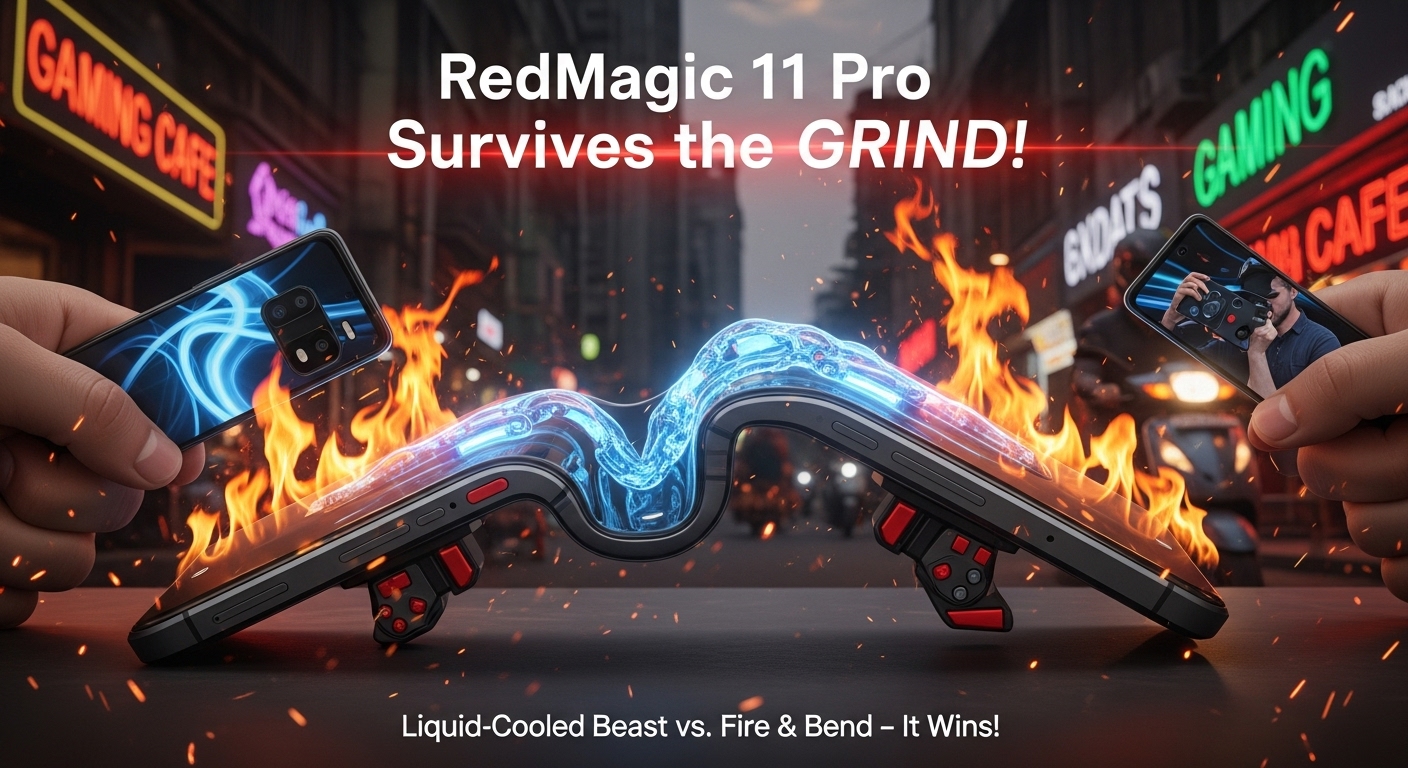In the sweltering heat of Indian summers, where power cuts are common and gaming marathons run late into the night, your smartphone needs to be more than just fast—it has to be tough. Enter the RedMagic 11 Pro, Nubia’s latest gaming beast that’s turning heads with its built-in liquid cooling system. But does it really stand up to the daily grind? YouTuber Zack Nelson from JerryRigEverything put it through a brutal durability test, including scratches, bends, and even fire. Spoiler: This phone didn’t just survive—it thrived. Let’s dive in and see why the RedMagic 11 Pro could be your next unbreakable companion for PUBG Mobile sessions or Genshin Impact binges.
Meet the RedMagic 11 Pro: A Gamer’s Dream in Your Pocket
At first glance, the RedMagic 11 Pro looks like any premium smartphone, but it’s engineered for non-stop action. It rocks a massive 6.85-inch AMOLED display with a silky-smooth 144Hz refresh rate and over a billion colors—perfect for those vibrant battle royales that light up your screen. Under the hood, Qualcomm’s Snapdragon 8 Elite Gen 5 processor powers everything, paired with a whopping 7,500mAh battery that laughs at all-day usage.

What sets it apart? That eye-catching liquid cooling loop visible right through the back glass. It’s not just for show—it’s a server-grade system using fluorinated fluid to keep things chill during intense gameplay. Add in IPX8 water resistance (it can handle full submersion), 80W fast charging via USB-C, and responsive 520Hz shoulder triggers with grippy red buttons, and you’ve got a phone that’s ready for India’s chaotic streets and humid vibes. No camera bumps either—the flat 50MP triple rear setup (main with stabilization, wide-angle, and macro) keeps it sleek and pocket-friendly.
Priced competitively for what it offers, this mid-range monster targets gamers who want flagship power without the premium tag. But toughness? That’s where the real test begins.
The Durability Gauntlet: Scratch, Bend, and Burn
Nelson didn’t hold back. He started with the classic Mohs hardness test on the screen. The pre-applied film scratched faintly at level 2 and deeper at level 3—standard stuff. Peel it off, and the Gorilla Glass underneath? It shrugged off scratches until level 6, with deeper grooves only at 7. No cracks, no spiderwebs. In India’s dusty environments, where sand and grime are everywhere, this means your display stays pristine longer.
Next, the back glass with its glowing blue coolant loop. It took scratches at level 6 and grooves at 7—impressive for an exposed surface on a gaming phone. The aluminum frame? A box cutter barely left scuff marks, no dents or warps. This build quality shines for commuters dodging Mumbai traffic or Kolkata monsoons; it won’t bend under accidental drops in your bag.
The bend test was the heart-stopper. Nelson pressed from front and back—the phone flexed like a pro athlete, absorbing the pressure, then snapped right back flat. No creaks, no cracks. For Indian users juggling phones while riding pillion on a scooter or during crowded train rides, this resilience is gold. And the fire test? He torched the screen for 20 seconds—it left a tiny white scar, but the display fired up instantly at full 144Hz glory. The back? Flames hit the coolant loop, and the liquid churned like a mini storm, sucking away heat so fast the fire fizzled out. No melting, no leaks. In a country where heatwaves push temps over 45°C, this phone stays cool—literally.
Liquid Cooling: The Secret Weapon Against Overheating
Gaming phones overheat faster than a tandoor in peak lunch hour, but the RedMagic 11 Pro fights back with smarts. Its liquid cooling isn’t some gimmick—it’s a full loop of fluorinated fluid pumped through tubes, a vapor chamber, and a jet-like fan spinning up to 24,000 RPM. Vents at the bottom pull in cool air and exhaust hot stuff out, keeping the Snapdragon humming without throttling.
During the fire test, that loop proved its worth: the coolant bubbled and dissipated heat in seconds, protecting internals like the battery and motherboard. It’s fused into one detachable piece, making repairs easier too. For Indian gamers grinding ranked matches in airless rooms or outdoors during festivals, this means sustained 120+ FPS without lag spikes or shutdowns. No more pausing mid-clutch because your phone turned into a hand warmer.
Teardown Time: Built Like a Tank Inside
Curious about the guts? Nelson’s teardown peeled back the layers. Twenty T4 screws hold it together—secure but not impossible to open. Heat up the adhesive-backed glass, and it pops off, revealing red gaskets that seal against spills (hello, accidental chai splashes). The 7,500mAh battery slides out with easy-pull tabs—user-friendly for quick swaps.
The motherboard packs the Snapdragon neatly, with the cooling array looping coolant to a metal duct right over the chip. Dust might sneak into the fan exhaust over years (despite mesh guards), but IPX8 means water flows harmlessly through a separate duct. The fan? It roars like a mini jet engine, but it’s whisper-quiet under normal use. Overall, this isn’t fragile tech—it’s modular and robust, designed for longevity in real-world abuse.
